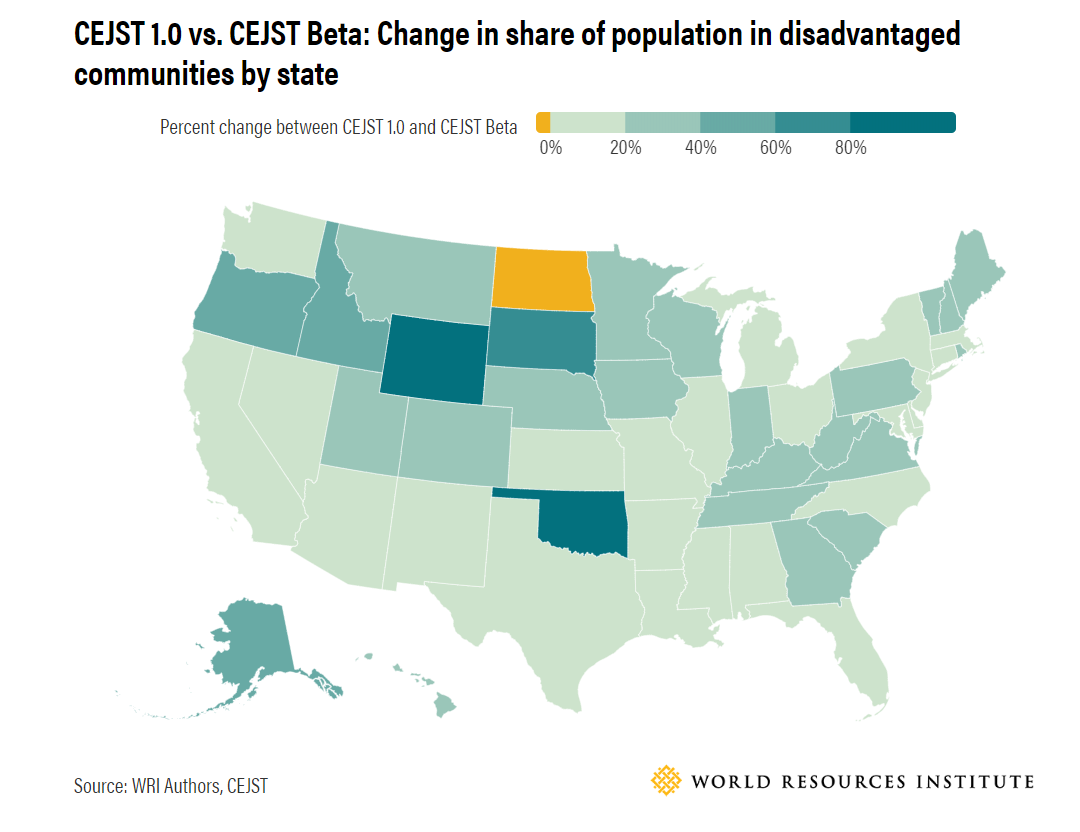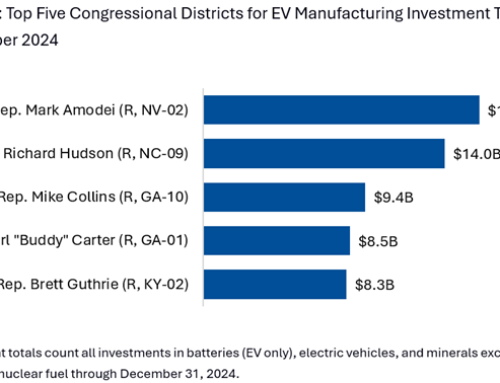
Image source: WRI
Earlier last month, an Indiana EV equity alliance convened to discuss how communities can hold the government accountable to the Justice 40 Initiative. According to Denise Abdul-Rahman of the Indiana NAACP, “this funding is a once-in-a-lifetime opportunity for equity and to improve Black lives.”
It is now just over two years since the Biden administration announced the Justice 40 Initiative. We are now getting a clearer picture of actions by the Biden Administration as well as how communities on the ground are working to ensure that federal investments are being equitably routed as promised.
To recap, Justice40, or J40, is a federal initiative with the goal of directing 40 percent of overall benefits of relevant federal investments to disadvantaged communities. Currently, there are hundreds of J40 covered programs. In an earlier digest, we explored what J40 looks like, and what programs qualify.
Since then, there has been curiosity on two key questions related to J40:
-
How do we define Disadvantaged Communities (DACs)?
-
How do we define benefits?
We now have a clearer answer of the first question – that is, in defining and identifying DACs. In November 2022, the White House Council on Environmental Quality (CEQ) launched the long-anticipated version 1.0 of the Climate and Economic Justice Screening Tool (CEJST 1.0). This tool is an update to the beta tool released in February of 2022. The screening tool is intended to help guide the implementation of J40, and help federal agencies identify disadvantaged communities.
The tool identifies disadvantaged communities through eight categories of “disadvantaged status,” and within these categories are a total of 18 relevant equity indicators. DACs are defined at a census tract (generally between 1,200 and 8,000 residents) — a very granular level. According to CEJST, census tracts are considered disadvantaged if “they meet 90th percentile thresholds for indicators within any of the eight categories and are at or above the 65th percentile for low-income.” In other words, if a census tract is in the 10 percent most disadvantaged for an indicator and is also low income, then it is considered to be a DAC.
Despite the Administration’s efforts to direct funds to underserved communities with the help of CEJST, the screening tool has been met with some criticism. Analysis from the World Resources Institute (WRI) released in March 2023, focused on at least two key shortcomings of the updated version of the tool – the lack of consideration of race and cumulative burden.
In the tool, race is only implicitly accounted for. Because of this shortcoming, analysis by WRI shows that the percentage of disadvantaged communities in the United States has increased, which has the potential to de-prioritize targeted investments to communities that stand to benefit most from J40. Furthermore, CEJST 1.0 fails to stack up cumulative burdens – the total “harm to communities that occurs due to a combination of environmental, socioeconomic and health-related burdens.” The resulting implication is that all DACs, from those with relatively less disadvantage and those with relatively more disadvantage are all treated the same. According to the WRI analysis, this disproportionately impacts Black communities in particular.
And what exactly qualifies “40 percent of overall benefits” remains unknown. It’s expected that the CEQ will release a scorecard of benefits in the coming weeks or months, though the timing remains unclear.
Communities of color have long faced the brunt of transportation inequities, causing years of irreparable harm to social and economic mobility. With the National Electric Vehicle Infrastructure (NEVI) program, J40 can serve as a blueprint for ensuring that historically vulnerable communities are part of the conversation and receive the benefits in this clean transportation transition.
Since NEVI is one of the first programs required to apply J40, there is much to learn about how communities can benefit effectively. To help guide the implementation of J40 in the NEVI program, Atlas is partnering with Evergreen Collaborative, with strategic input from EVHybridNoire and GreenLatinos, to produce an analysis of how equity has been centered in the first round of NEVI planning.
The forthcoming analysis will:
-
Evaluate how states engaged disadvantaged communities in the development of the NEVI plan through a series of interviews with equity and community advocacy groups.
-
Analyze how states incorporated a set of equity indicators in their NEVI plans and highlight best practices for equitable deployment.
Interested in learning more about this analysis? Get in touch by responding to this email.

